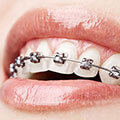
Juvenile Idiopathic Arthritis Treatment
Juvenile idiopathic arthritis is a common type of arthritis that affects children; it is earlier known as juvenile rheumatoid arthritis. Children under 16 years of age are mostly affected.
It is a chronic disease that affects any joint of the body. The immune system mistakenly targets synovium (synovium is a tissue that lines the inside of the joint). The synovium responds by making excess synovial fluid which leads to persistent joint pain, swelling, and stiffness. The inflammation and synovium spreads to the surrounding tissues and damage cartilage and bone.
Some children may see the early symptoms only for a few months, while others have symptoms lifelong. Some categories of juvenile idiopathic arthritis can give rise to critical problems, such as growth and development problems, joint damage, and eye inflammation. Treatment is given to reduce pain and inflammation, improving the function of the joints, and preventing any further joint damage.
There are many types of Juvenile idiopathic arthritis they are: - Systemic arthritis, Oligoarthritis, Polyarthritis, Psoriatic arthritis, Enthesitis-related arthritis.
Symptoms of Juvenile Idiopathic Arthritis(JIA):
Depends on the type of JIA, the symptoms vary. Common symptoms are
- Morning stiffness: you might have noticed that your child is unable to walk especially in the morning.
- Pain: the child appears clumsier than usual mainly in the mornings and after taking nap.
- Swelling and tenderness in the joints: it is mostly noticed in the larger joints such as knee.
- Limping, fever, rash, weight loss, fatigue, eye redness, and blurred vision: these symptoms usually worsen in the evenings.
- Based on the symptoms and the number of joints affected the type of disease is identified.
Symptoms come and go over days or weeks. When the child has less fever it seems to be fine. When it flares up, the child will feel sick. Children will have good days with very few or without any symptoms, and worse days with flare up symptoms.This condition might cause inflammation in the lining of the lung (pleuritis) or heart (pericarditis). It may also cause swollen lymph nodes. Children with these conditions may grow slowly than normal.
Causes:
Juvenile idiopathic arthritis occurs when our own body's immune system attacks its own cells and tissues. Research indicates that it is an autoimmune disease. White blood cells can’t tell the difference between healthy cells and germs. Instead of protecting from these harmful invaders, it damages healthy tissues and cause inflammation and pain. It's unknown why this happens, but both heredity and environment seem to play a vital role in causing the disease. Certain gene mutations may make a person more vulnerable to environmental factors like viruses that are the triggering source of the disease.
When to see a doctor?
Consult the doctor by taking your child to him, if the child has joint pain, swelling or stiffness that is persists more than a week along with mild or high fever.
Complications:
Many severe complications can come from Juvenile idiopathic arthritis. Therefore, keeping a careful watch on your child’s condition and getting the medical treatment done at right time will reduce the complications.
- Eye problems: Some types of JIA can cause eye inflammation (uveitis) which may result in cataracts, glaucoma and even blindness if it is not treated earlier. Inflammation in eye occurs without any symptoms; therefore the child should be examined frequently by an ophthalmologist.
- Growth and bone development problems may occur with Juvenile idiopathic arthritis. Some medications that are utilized for treating JIA, mostly corticosteroids, also can hinder growth.
Diagnosis:
There are no tests done specifically to diagnose JIA. JIA is a diagnosis of exclusion that helps the doctor to rule out other diseases that have similar symptoms.
To diagnose JIA, the doctor tries to understand the complete medical history that includes details of the symptoms and a complete physical examination.
Imaging techniques such as X-rays or magnetic resonance imaging (MRI) is conducted to know the condition of the joints and reject other conditions, such as fractures, tumors, infection or congenital defects. Imaging may also be used after the diagnosis frequently to monitor bone development and to detect joint damage.
Lab tests are done on blood, urine or joint fluid to find out the type of arthritis. These tests are
- Erythrocyte sedimentation rate – this is a simple test done to measure the erythrocyte sedimentation rate that is how rapidly red blood cells settle to the bottom of the test tube with blood sample. The rate of settling will be faster if inflammation is in the body.
- CBC- a common blood test to know the basic cells types in blood which includes red blood cells, white blood cells, and platelets.
- C-reactive protein- it is protein which liver releases into the blood at the beginning of the infection or inflammation.
- Anti-nuclear antibody (ANA)- it is a blood test to find out autoimmune diseases. It also helps in predicting if the child is likely to have eye disease with JIA.
- Rheumatoid factor- it is an antibody occasionally found in children’s blood who have JIA
- Cyclic citrullinated peptide (CCP) - this is an antibody same like the rheumatoid factor found in child’s blood who have JIA.
- HLA B27
In most of the children with juvenile idiopathic arthritis, no significant abnormality will be found in these blood tests. These tests can help the doctor to rule out other diseases such as infections, bone disorder, cancer or any injury.
Treatment:
Treatment for juvenile idiopathic arthritis will help your child to lead a normal level of physical and social activity. To achieve this, doctors may use different combinations to relieve pain and swelling, maintain full movement and strength, and avert complications. In few cases the child is given corticosteroid injections into the joint. In very rare cases, kids may require surgery.
Medications:
The main goal of treatment is to relieve pain, reduce swelling, and improve joint mobility and strength and also to prevent joint damage and complications. The treatment usually includes medications and exercises.
Typical medications to treat Juvenile Idiopathic Arthritis (JIA):
- Nonsteroidal anti-inflammatory drugs (NSAIDs): these medicines provide pain relief and reduce swelling, but will not affect the course of prognosis of JIA.
- Disease-modifying antirheumatic drugs (DMARDs). These medications are used to prevent bone and joint destruction by suppressing the immune system’s attack on the joints.
- Biologic agents. This is also known as biologic response modifiers; this newer class of drugs includes tumor necrosis factor (TNF) blockers, such as etanercept (Enbrel) and adalimumab (Humira). These medications directly target molecules or proteins in the immune system that are responsible for causing inflammation and prevent joint damage. Other biologic agents such as abatacept (Orencia), rituximab (Rituxan), anakinra (Kineret) and tocilizumab (Actemra) work to suppress the immune system.
- Corticosteroids. These are steroids; generally doctors try to avoid using these for young children because they can affect the child’s normal growth when used for longer periods. Patients with severe pain and swollen joints with other types of JIA, or with oligoarthritis, these medicines are very effective when given as an injection into the affected joint. Medications are rarely given as pills, as they are effective but can have serious side effects including weakened bones.
Physical Therapies
The treatment should be with a combination of physical therapy. It will help the child keep their muscles strong and flexible.
A physical therapist will create an exercise program that is suitable to the child’s condition. The doctor may recommend splints or any other devices to help maintain normal bone and joint growth.
Some alternative therapies can be followed such as acupuncture; it will help the child to manage stress and eases pain. It may lower the use of painkillers and help in improving flexibility in affected joints.
Surgery
In some severe cases, surgery may be required to improve the position of a joint.
Lifestyle and home remedies
Parents can help children learn self-care techniques to cure arthritis which includes:
- Getting regular exercise as it promotes both muscle strength and joint flexibility. The best exercise is swimming.
- Applying cold or heat or hot and cold shower to fight morning stiffness.
- Some children may gain more weight due to medications or some may have poor appetite. So a balanced healthy diet is very important.
- Adequate calcium in the diet is a must for the child with JIA as they may develop weak bones.
Conclusion:
Help your child by treating them like other children at home. Make them understand that they can overcome the disease. Motivate them in all sorts of activities
Subscribe to our
Newsletter
***We Promise, no spam!



